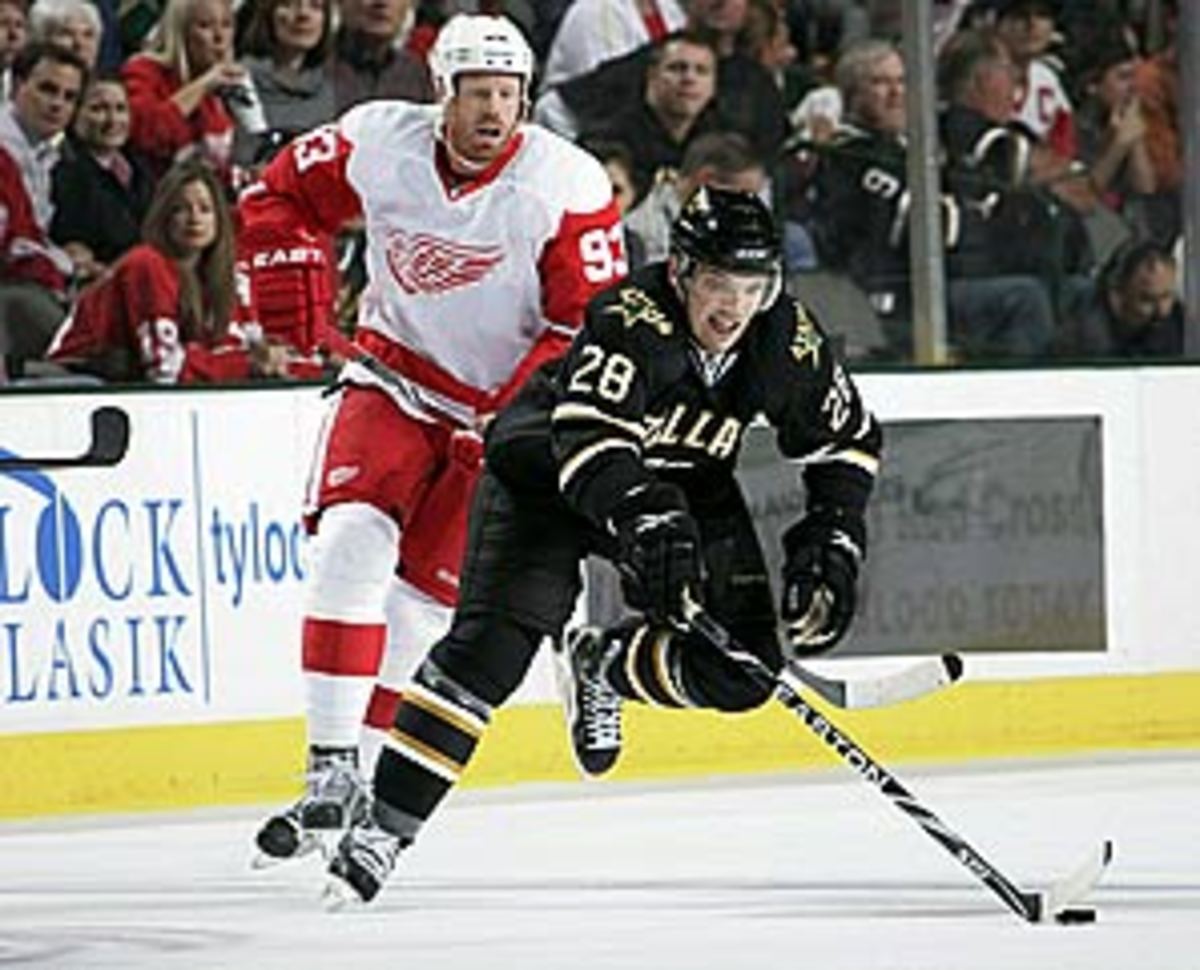
Injuries hurt more in the cap era
Week Two and some things we never saw coming...
The Toronto Maple Leafs at 4-0 certainly qualifies, but that's not what has me ruminating about the long term. The New Jersey Devils and then the Detroit Red Wings entering competition with reduced game rosters is intriguing on many levels. Talk about unexpected ramifications in the salary cap era.
Both of these proud and successful franchises pushed for depth in the era before the NHL capped salary spending. The Devils and Red Wings worked young players into the mix on a call-up basis during the regular season, but typically made trade deadline deals for veterans to bolster their lineups as they entered the playoffs. Fast-forward to Week Two of the current campaign and neither team could afford to call up players in order to ice a full complement of 18 skaters because those added salaries -- pro-rated for the time they were on the NHL squad -- would compromise their cap position. The Devils caught a temporary break on Oct. 13 when Brian Rolston went on long-term Injured Reserve for four to six weeks due to sports hernia surgery, thus freeing up $5.1 million in cap space that allowed the team to fill out its roster by calling forwards Jacob Josefson and Tim Sestito and defenseman Matt Corrente up from Albany of the AHL.
But how's that for living check to check? Cap manipulation and budgets aren't mutually exclusive, yet for the Red Wings and Devils their "fiscal year" was just beginning and they had already spent all their money. That makes for a long six-month cycle where bumps and bruises that aren't serious enough for IR designation mean that teams can't compete with four full lines, six defensemen and two goalies on any given night. The random nature of such ailments over a long season means that this isn't necessarily a quirk that's unlikely to arise again. Instead, teams that are up against the $59.4 million spending limit for 2010-11 -- and there are several others beyond the Devils and Red Wings -- are going to have to continue to explore "creative" personnel scenarios.
This is where it potentially gets dicey. Never mind the headaches for GMs and capologists. On a day-today, game-to-game level, the coaches and trainers are on the spot. Coaches can't plan because they don't know what -- never mind who -- they have to work with. Trainers feel the squeeze as injuries mount -- more so than they already do. In the short-term, sure, the youth hockey model may apply whereby playing with a few less skaters can be advantageous, if you dress the "right guys." From both the Devils and the Red Wings we heard the "our top guys won't mind getting more ice time" rationalization.
But that is a flawed platitude.
Sure, we used to see 16 skaters and two goalies dressed per contest. That changed to 20 as the pace of the game increased. More skaters means fresher players means quicker tempo. It was also part of the job creation element of any collective bargaining agreement. Now, having a maximum of 23 rostered players loses its meaning when a team can't even afford to dress 20 for a given game. Never mind what it does to the kid waiting for his chance in the AHL. I don't think any player ever thought he'd be toiling in the minors with his call-up predicated on clearing cap space, as the Devils were able to do.
KELLEY:Devils' short bench making NHL sweat
The last sticking point is the possible pressure on players to play through those aforementioned nagging injuries. The pressure to play hurt is always there to varying degrees, but usually it is an individual's internal compass. In other words, players deal with pain differently. Now, though, if teams can't afford to give a guy time to make sure he is healed enough to play all out, the dynamic changes. It can become contentious, uncomfortable and divisive, with the chance that nagging pain becomes debilitating or chronic.
Let's hope it doesn't get to the point where we're talking downright dangerous.





